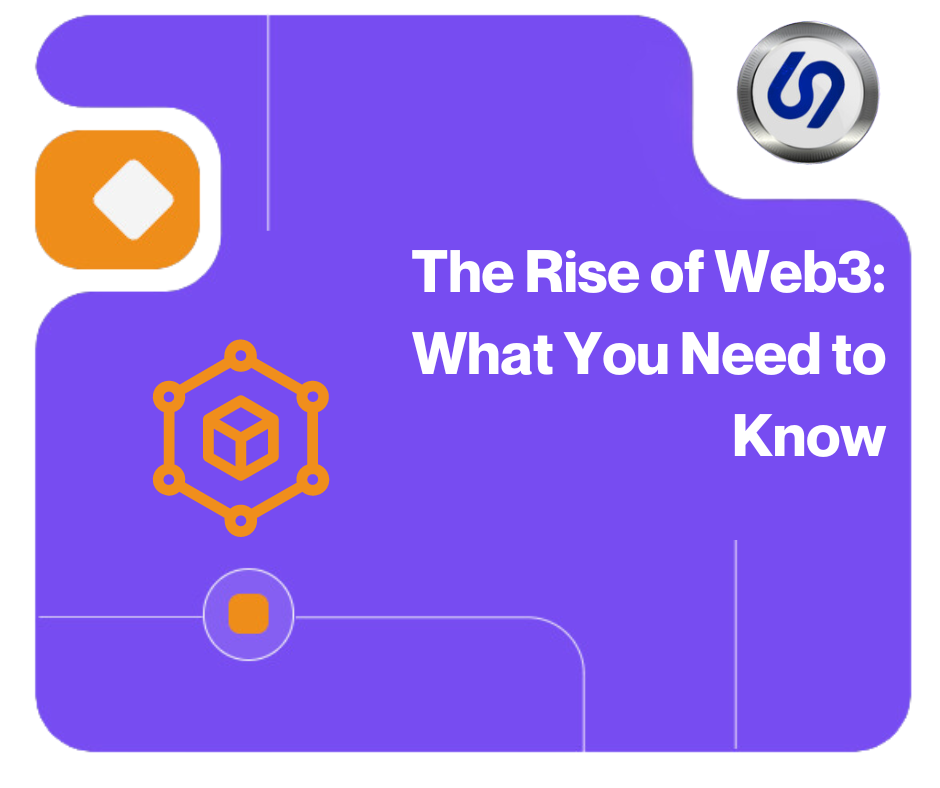
















 The Rise of Web3: What You Need to Know
The Rise of Web3: What You Need to Know
The internet has undergone significant transformations since its inception, evolving from Web1, the static web, to Web2, the interactive and social web. Today, we stand on the brink of the next major evolution: Web3. This new iteration of the web promises to revolutionize how we interact with the internet by introducing decentralization, enhanced security, and greater user control. This blog will explore what Web3 is, its key features, and its potential impact on the digital world.
Web3, also known as the decentralized web, is the third generation of internet services that leverage blockchain technology, decentralized protocols, and smart contracts to create a more open, secure, and user-centric online experience. Unlike Web2, which relies heavily on centralized servers and databases controlled by a few major corporations, Web3 aims to decentralize data and applications, giving users greater ownership and control over their digital identities and assets.
Key Characteristics of Web3:
Decentralization: Web3 is built on decentralized networks, such as blockchain, where data and applications are distributed across multiple nodes, eliminating single points of failure.
User Ownership: Users have direct ownership of their data, digital identities, and assets, often managed through cryptographic keys and wallets.
Interoperability: Web3 enables seamless interaction between different platforms and applications, thanks to standardized protocols and decentralized technologies.
Smart Contracts: These self-executing contracts with the terms directly written into code automate and enforce agreements, reducing the need for intermediaries.
Blockchain:
Blockchain is the foundational technology of Web3. It is a decentralized, distributed ledger that records transactions across a network of computers. This technology ensures transparency, security, and immutability of data.
Cryptocurrencies:
Cryptocurrencies like Bitcoin and Ethereum are integral to Web3, facilitating decentralized finance (DeFi) and enabling peer-to-peer transactions without intermediaries.
Smart Contracts:
Smart contracts are programmable contracts that automatically execute when predefined conditions are met. They enable trustless and automated interactions on decentralized platforms.
Decentralized Applications (dApps):
dApps are applications that run on decentralized networks, offering services ranging from financial transactions to social media, all without centralized control.
Enhanced Security:
Decentralization reduces the risk of data breaches and cyberattacks by eliminating central points of vulnerability. Blockchain's cryptographic security further ensures that data is tamper-proof.
Greater Privacy:
Web3 empowers users to control their personal data, deciding what information to share and with whom. This contrasts with Web2, where user data is often exploited by centralized entities for profit.
Economic Empowerment:
Decentralized finance (DeFi) platforms on Web3 provide financial services such as lending, borrowing, and trading without traditional banks. This democratizes access to financial services, especially for those underserved by traditional systems.
Increased Transparency:
The transparent nature of blockchain technology ensures that all transactions and activities are publicly recorded and verifiable, reducing the potential for fraud and corruption.
Interoperability and Innovation:
Web3's open protocols allow for greater interoperability between different platforms and applications, fostering innovation and collaboration in the digital ecosystem.
Scalability:
While Web3 promises enhanced security and decentralization, achieving scalability remains a challenge. Processing transactions on decentralized networks can be slower and more resource-intensive compared to centralized systems.
Usability:
For Web3 to achieve mainstream adoption, user-friendly interfaces and experiences are crucial. Currently, many Web3 applications require technical knowledge that may be a barrier for the average user.
Regulation:
The regulatory landscape for Web3 is still evolving. Striking a balance between innovation and compliance will be essential to ensure the growth and sustainability of the decentralized web.
Energy Consumption:
Blockchain technology, particularly proof-of-work (PoW) consensus mechanisms, consumes significant amounts of energy. Transitioning to more energy-efficient models, such as proof-of-stake (PoS), is vital for the environmental sustainability of Web3.
The rise of Web3 marks a transformative shift in the digital landscape, promising a more secure, private, and user-centric internet. By leveraging blockchain technology, smart contracts, and decentralized protocols, Web3 aims to decentralize power and empower users. While challenges remain, the potential benefits of Web3 are immense, paving the way for a more equitable and innovative digital future.
As we transition to this new era of the web, staying informed and engaged with the developments in Web3 will be crucial. Embrace the possibilities of the decentralized web and be part of the revolution that is set to redefine our digital interactions.